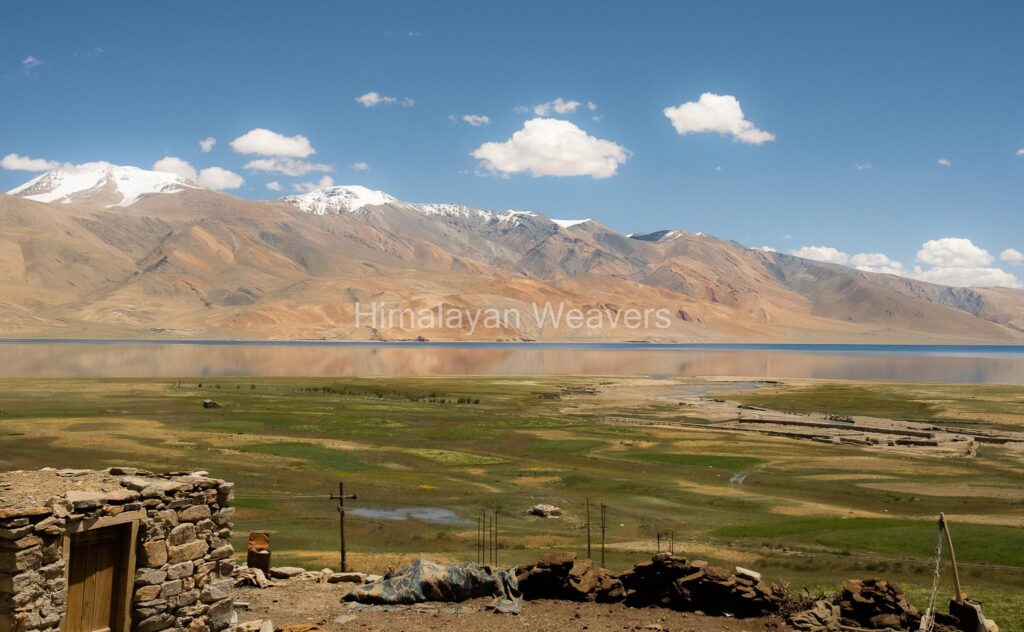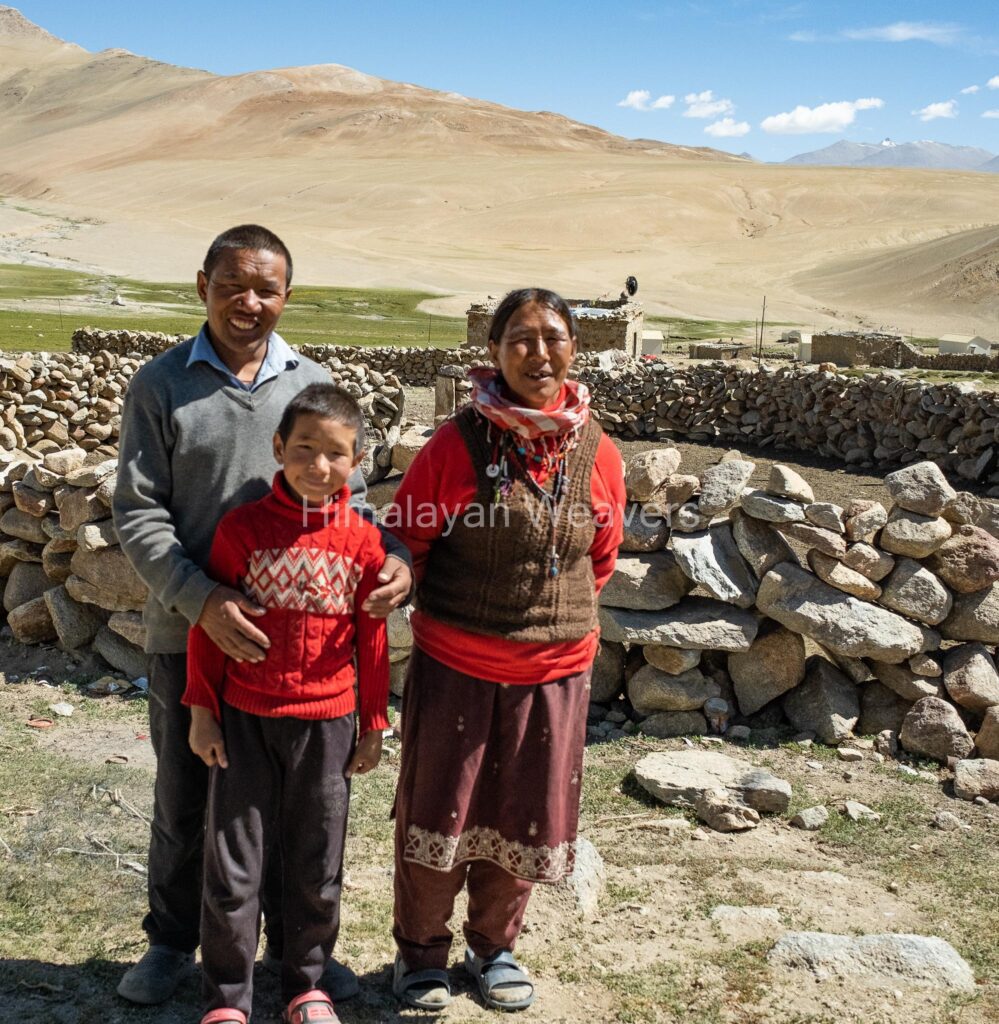Pashmina is the undercoat of goats found in some of the world’s harshest climates. The winter temperature in these places can be as low as -35 centigrade. In order to survive these extremely low temperatures the goats develop a very fine undercoat. This undercoat or fibre is called pashmina. It is valued for its softness, warmth and elegance.
India accounts for only 1% of the world’s pashmina production. The bulk of it is produced in China (75%) and Mongolia (19%).

Although its shawls are closely associated with Kashmir, pashmina is not produced there. Most pashmina in India is produced in the Changthang region of Ladakh, which is a high-altitude cold desert at heights of between 4000 and 4500 meters

The Changthang plateau is inhabited by pastoralist nomads called Changpas. Although some of them practice limited farming of barley on small plots in summer, they mostly depend on livestock; they keep sheep, yaks and horses also, but Pashmina goats are their most valuable assets and important source of income.
Pashmina is among the world’s most expensive fibres; the minimum price of a pure pashmina shawl, for example, is about Rs. 25,000. The price of shawls with embroidery is much higher.
Pashmina is valued because it is very fine, soft and warm. In fact, it is one of the finest fibres in nature; typically its thickness ranges between 12-15 microns. Compared to this, most fine wools are about 17 microns thick.
Pashmina is warmer than wool and other fibres because it is a hair and hollow. The air inside the hair makes it one of the most insulating natural materials and articles made with it are very warm.
As it is very delicate, pashmina garments should never be washed in a washing machine, or with detergents. They should be hand washed very gently with mild liquid soaps or, preferably, with soap nut in cold water.
There is no need to dry-clean pashmina garments. All our pashminas are hand-washed with soap nut.
The damage caused to the environment by chemical dyes is well known. They create effluents which pollute water bodies and contaminate ground water. Workers engaged in the dyeing work are also exposed to dangerous chemicals, many of which are carcinogenic. Natural dyes, on the other hand, are comparatively benign.
As pashmina is a very delicate fibre, it should not be treated with harsh chemicals and it is better to avoid the use of chemical dyes on it. Traditionally, all pashminas in Kashmir were coloured with natural dyes. Sadly, this is not the case anymore and the use of chemical dyes is now very common.
One of our objectives in setting up Himalayan Weavers is to promote the use of natural dyes on wool and pashmina products. All our pashminas and woolens are coloured with natural dyes, making them especially desirable.
A plain pashmina shawl (without embroidery) costs between Rs. 25,000 to Rs. 30,000. A shawl with traditional kani embroidery can cost much more. Any shawl for less than Rs. 10,000 is likely to be made with a blend or synthetic material, usually viscose.
Usually no! It depends more on the thinness of the yarn used to make the shawl, and less on the material. For example, a shawl made with very fine mill spun viscose yarn may pass through a ring while a shawl made with hand-spun pashmina will not. Unless it is made with very fine (usually mill spun) yarn, a pashmina shawl will not pass through a ring.
Our pashmina shawls are made with hand-spun yarn and are thicker than shawls made with mill-spun yarn; they will not pass through a ring. https://himalayanweavers.org/pashmina-shawls-stoles-scarves/